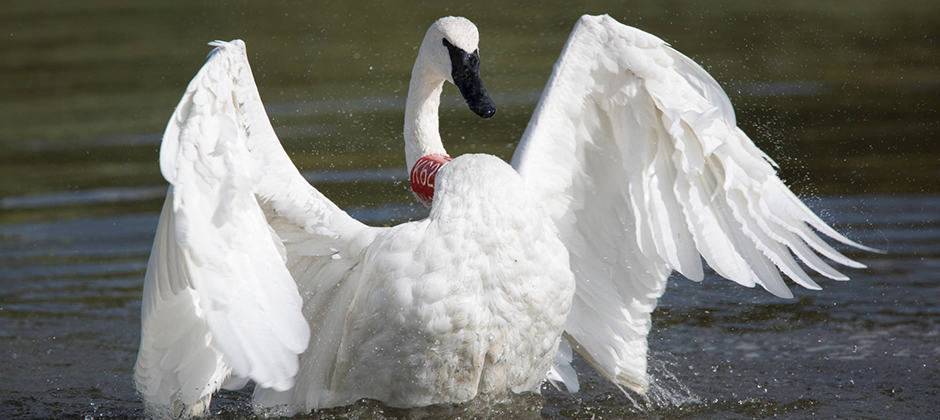Share this article
Modeling behavioral changes in wildlife
When David Wolfson was conducting research on trumpeter swans in the Midwest, one of the swans was spotted leaving the territory just after being GPS-tagged.
His team wondered how prevalent that kind of response was. Were many birds fleeing after being tagged? “We definitely wanted to make sure we weren’t putting any undue harmful effects on the birds as we captured and handled them,” he said.
The experience led to a review paper on the use of a technique called piecewise regression—a statistical model used to identify change points—to figure out the extent to which the birds were fleeing and coming back. His presentation, “Using Piecewise Regression to Identify Biological Phenomena in Biotelemetry Datasets,” earned Wolfson the Best Student Oral Presentation award at TWS’ virtual 2021 Annual Conference.
“It was very humbling,” Wolfson said. “I was really impressed with so many great graduate student presentations.”
Wolfson wanted to quantify the likelihood of a “flee and return” response in trumpeter swans (Cygnus buccinator), but the team was tagging over 100 swans. They would need an efficient method to handle data for all of them, and they would need a way to determine how to define when the birds left the area and how to define when they came back.Using piecewise regression, Wolfson was able to identify shifts in swan behavior after they were captured.
The flee responses were rare, his team found, and return times were usually less than a couple days. The experience showed him that piecewise regression could work not only for the responses of trumpeter swans but for a variety of applications and a range of wildlife. That sent Wolfson off on a review paper with co-authors John Fieberg and David Andersen to demonstrate the methodology’s strengths.
“It’s really a great combination of a really flexible modeling framework that can fit a lot of real world situations,” he said.
After his success on the swam project, Wolfson applied the approach to several scenarios involving a variety of species to highlight different ways it could identify clear changes in behavior.
He applied it to datasets of moose (Alces alces), which often move before giving birth and then remain sedentary, to remotely identify movements predicting birth events. He used data from cardiac biologgers to quantify the physiological response of black bears (Ursus americanus) to drone fights. He used his trumpeter swan data to remotely confirm mortality or collar failure from auxiliary data sources including temperature and accelerometry. And he used data from his master’s research on sandhill cranes (Antigone canadensis) to quantify migration chronology and the timing and duration of stopover use.
“Modeling keeps progressing and progressing,” Wolfson said. “That’s great because real life data is super messy. Sometimes you really do need a complicated method to tell an accurate story, but a lot of times you don’t.”
Header Image: David Wolfson’s research on trumpeter swans led him to explore ways to model behavioral changes in wildlife. Credit: Ryan Haggerty/USFWS








